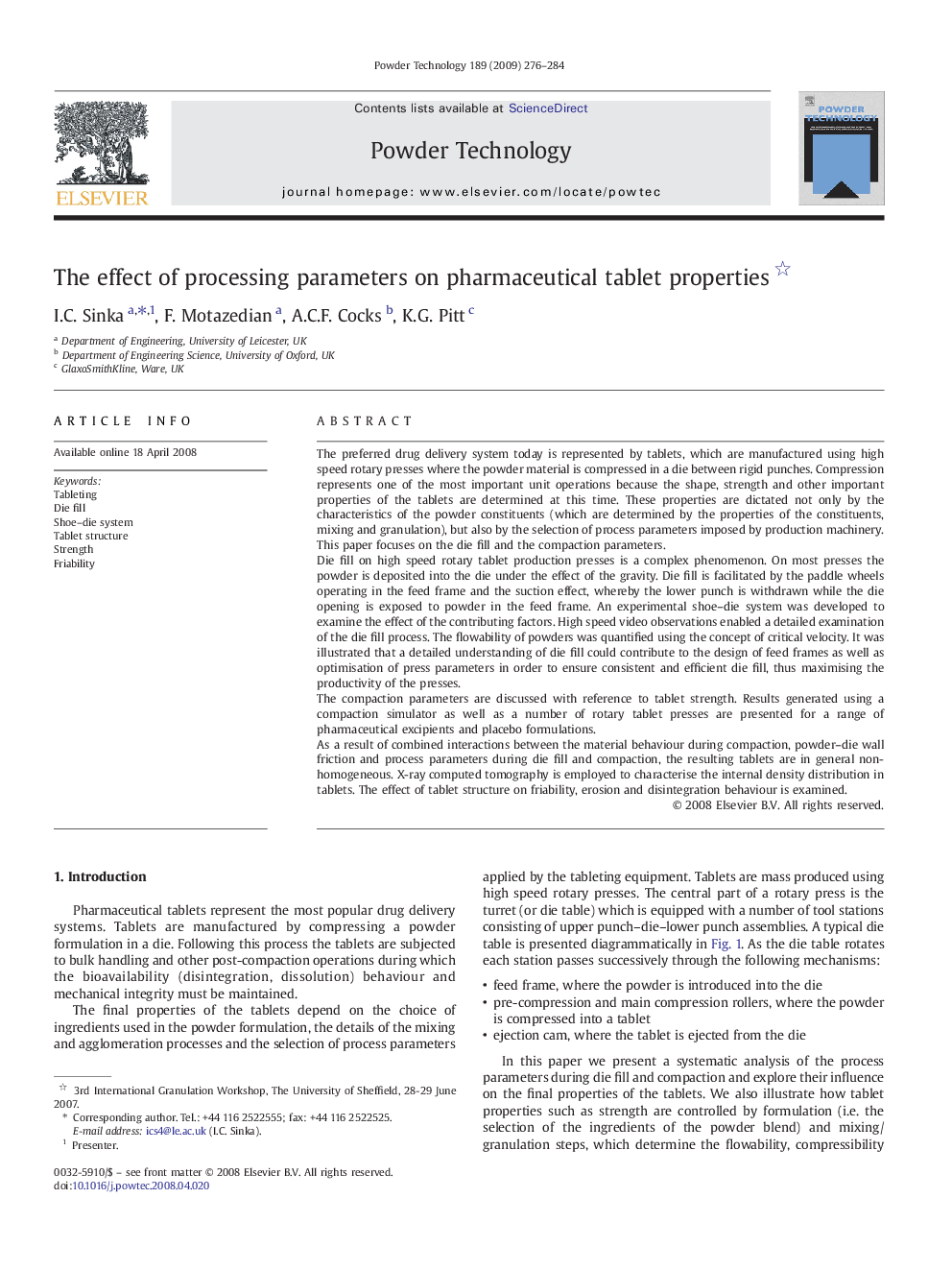| Article ID | Journal | Published Year | Pages | File Type |
|---|---|---|---|---|
| 238498 | Powder Technology | 2009 | 9 Pages |
The preferred drug delivery system today is represented by tablets, which are manufactured using high speed rotary presses where the powder material is compressed in a die between rigid punches. Compression represents one of the most important unit operations because the shape, strength and other important properties of the tablets are determined at this time. These properties are dictated not only by the characteristics of the powder constituents (which are determined by the properties of the constituents, mixing and granulation), but also by the selection of process parameters imposed by production machinery. This paper focuses on the die fill and the compaction parameters.Die fill on high speed rotary tablet production presses is a complex phenomenon. On most presses the powder is deposited into the die under the effect of the gravity. Die fill is facilitated by the paddle wheels operating in the feed frame and the suction effect, whereby the lower punch is withdrawn while the die opening is exposed to powder in the feed frame. An experimental shoe–die system was developed to examine the effect of the contributing factors. High speed video observations enabled a detailed examination of the die fill process. The flowability of powders was quantified using the concept of critical velocity. It was illustrated that a detailed understanding of die fill could contribute to the design of feed frames as well as optimisation of press parameters in order to ensure consistent and efficient die fill, thus maximising the productivity of the presses.The compaction parameters are discussed with reference to tablet strength. Results generated using a compaction simulator as well as a number of rotary tablet presses are presented for a range of pharmaceutical excipients and placebo formulations.As a result of combined interactions between the material behaviour during compaction, powder–die wall friction and process parameters during die fill and compaction, the resulting tablets are in general non-homogeneous. X-ray computed tomography is employed to characterise the internal density distribution in tablets. The effect of tablet structure on friability, erosion and disintegration behaviour is examined.
Graphical abstractThis paper presents a systematic analysis of the process parameters during die fill and compaction and explores their influence on the final properties of the tablets. We illustrate how tablet properties such as strength are controlled by formulation and mixing/granulation steps, which determine the flowability, compressibility and compactibility of powders. The effect of microstructure on tablet behaviour in terms of friability, erosion and disintegration is discussed.Figure optionsDownload full-size imageDownload as PowerPoint slide
